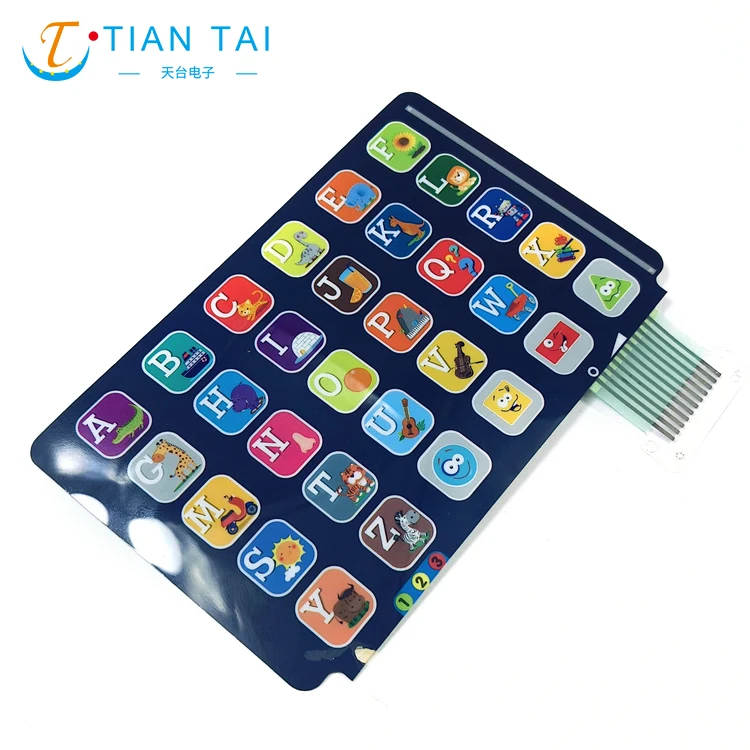Are the Buttons of Membrane Switch For Educational Toys Prone to Failure?
2025-07-15
The membrane switch for educational toys is a touch interface that combines a flexible circuit layer with a shrapnel structure. Its core feature is that it achieves circuit switching through physical deformation. The failure risk of this product mainly depends on the rationality of material selection and structural design.
The membrane switch for educational toys is composed of upper circuit contacts, an isolation layer and a lower conductive substrate. When pressed, the upper silver paste circuit penetrates the pores of the isolation layer to contact the lower circuit. The arched shrapnel structure provides tactile feedback and rebound power, and the stroke control determines the effective trigger threshold of the button.
Frequent and irregular pressing can easily lead to metal fatigue of the shrapnel, and non-vertical force may cause eccentric wear of the contacts. The penetration of toy surface cleaners will corrode the silver paste circuit and reduce the conductive stability.

So, will extreme pressing cause failure?
The double isolation layer design blocks external contaminants from invading the membrane switch for educational toys channel, and the edge hot melt sealing process improves the overall airtightness. Carbon ink printed circuits replace traditional silver paste to eliminate the increase in resistance caused by sulfide corrosion. The spring is made of phosphor bronze substrate and strengthened by heat treatment, which can withstand compression deformation exceeding the rated number of times.



